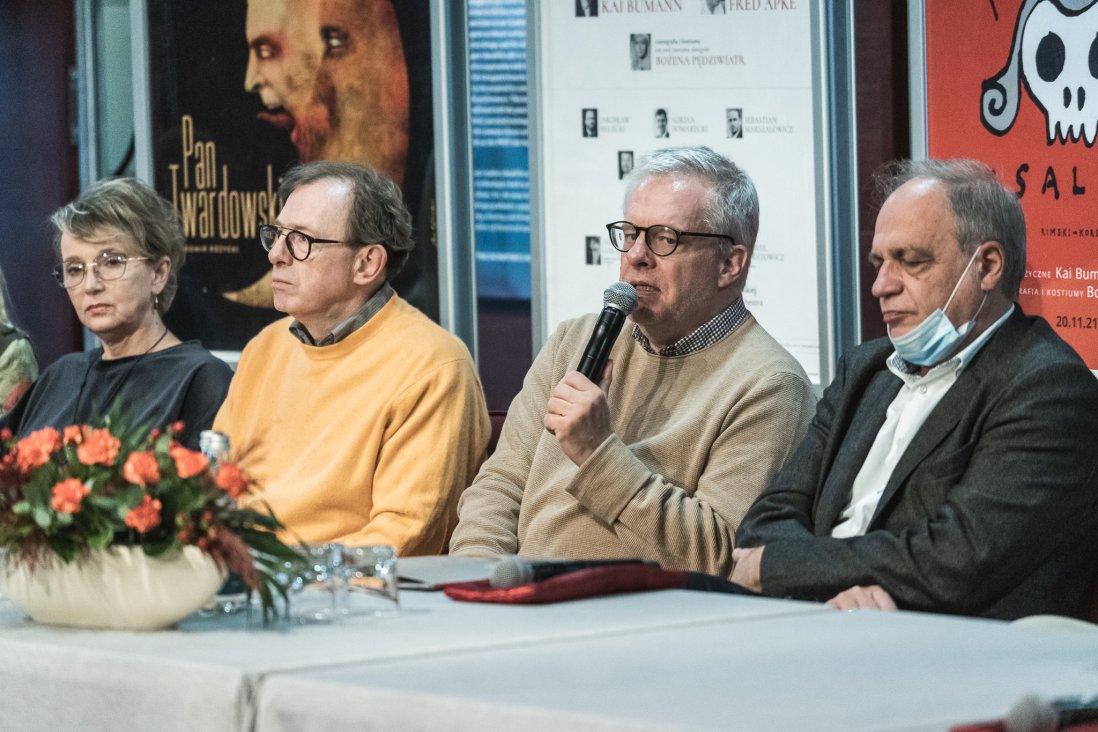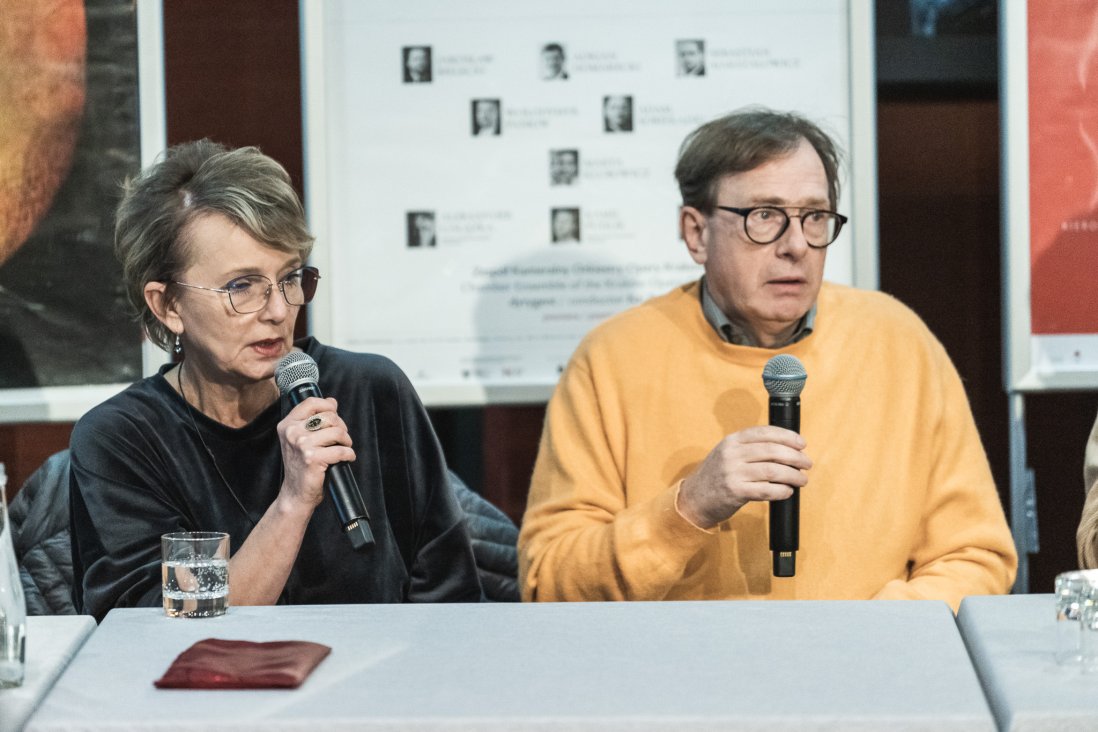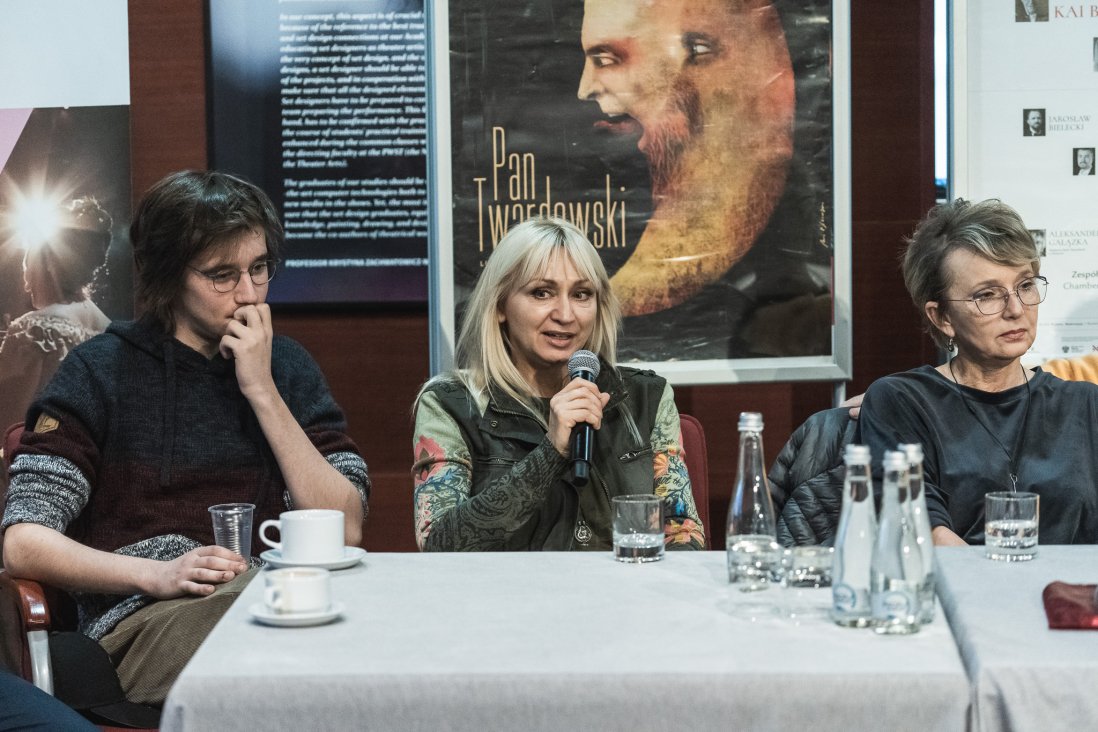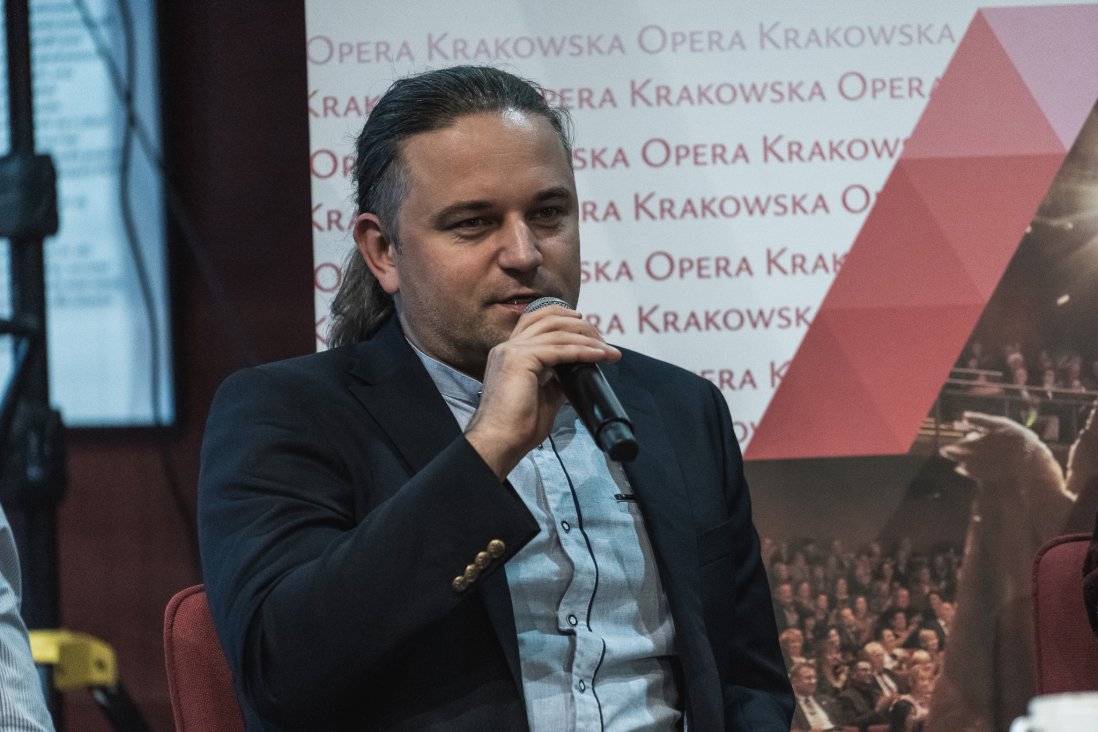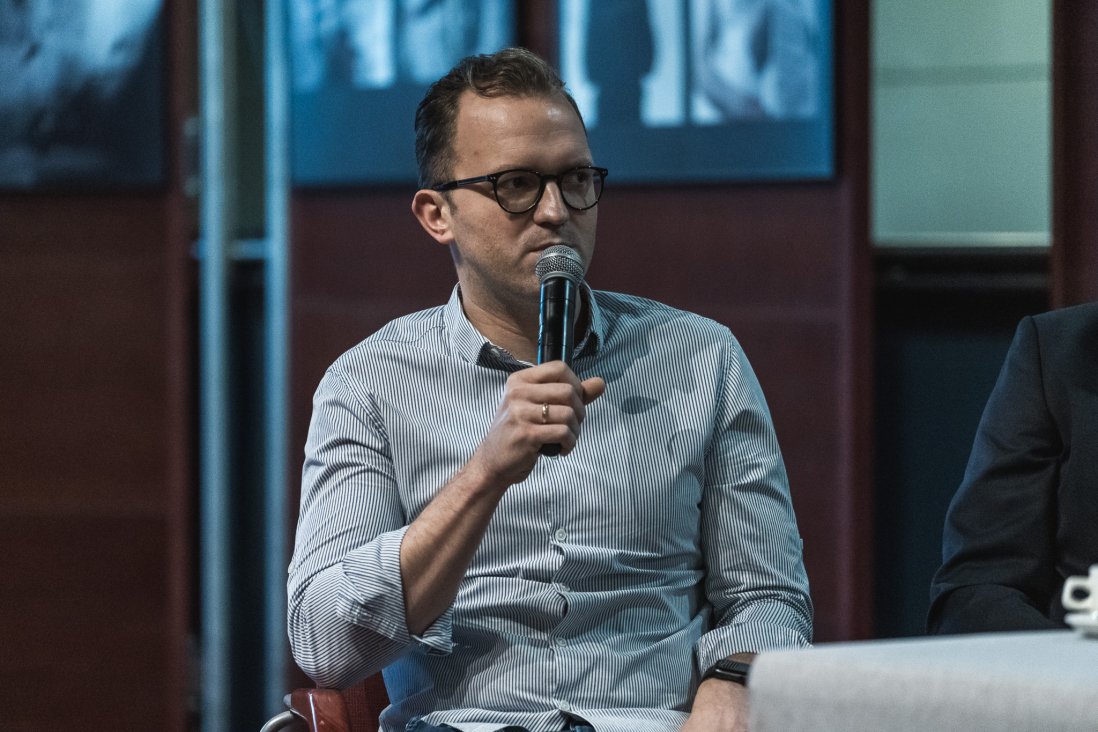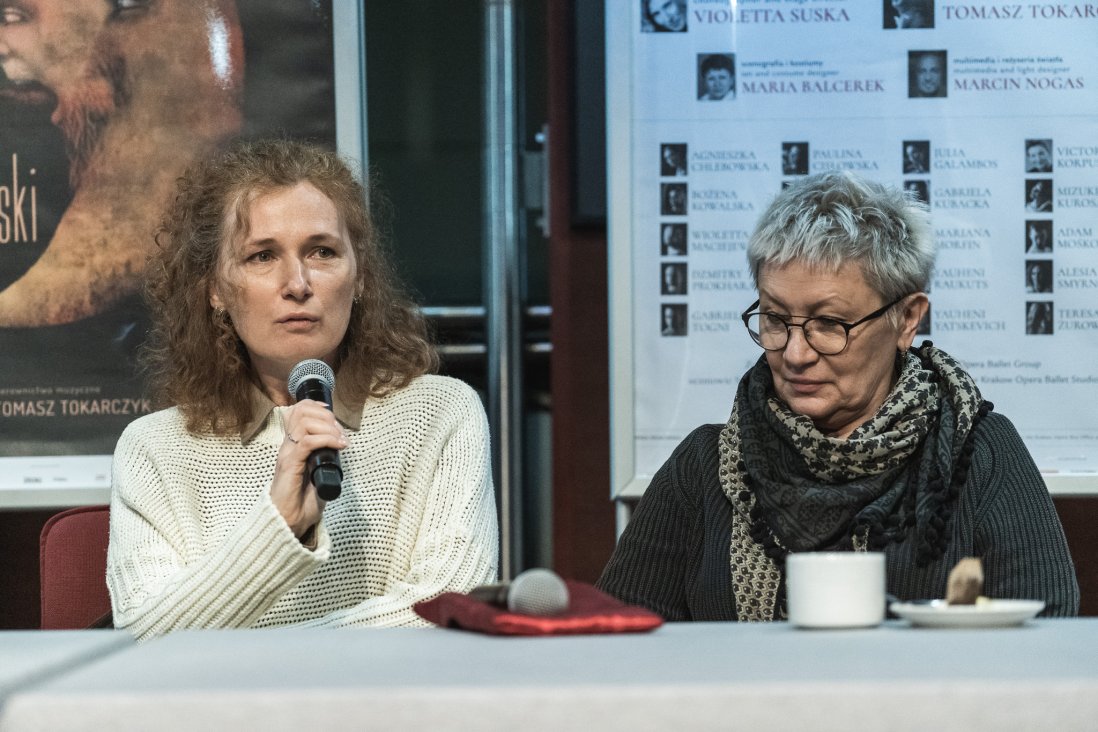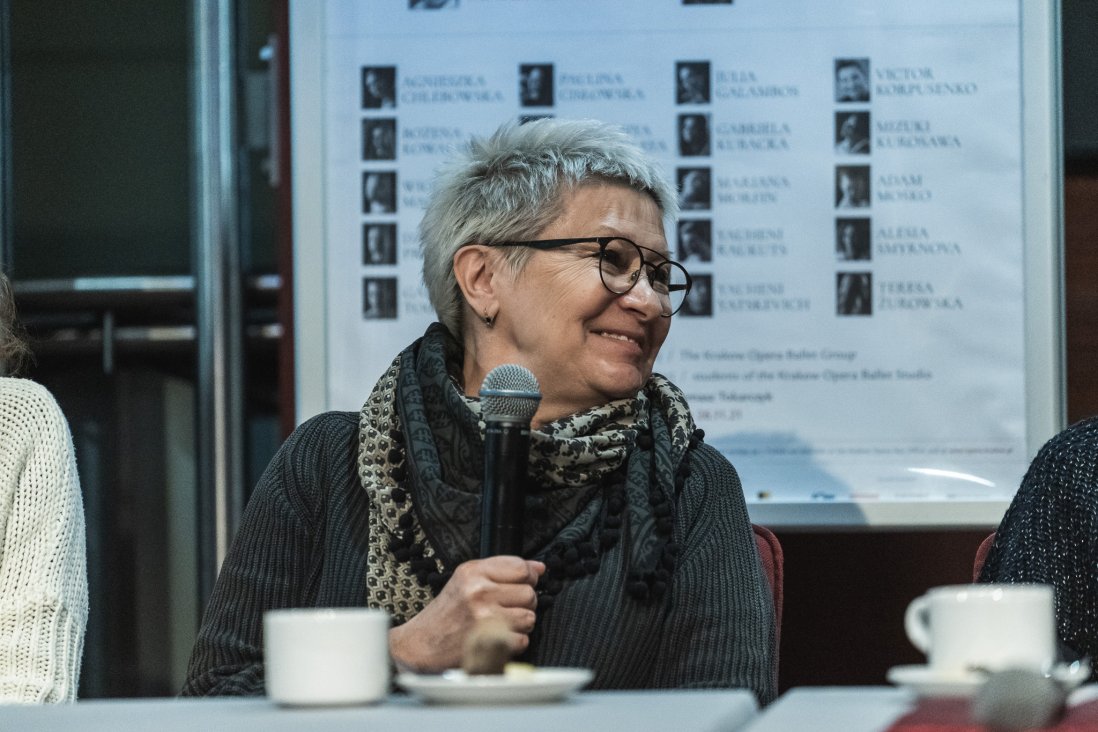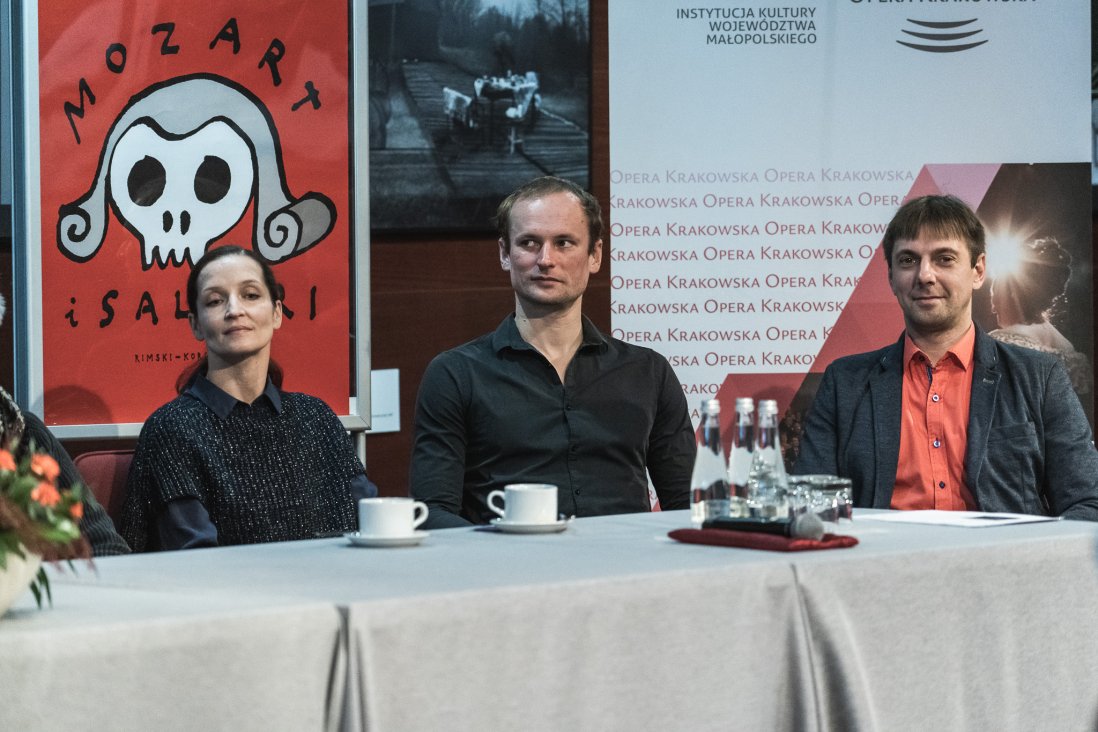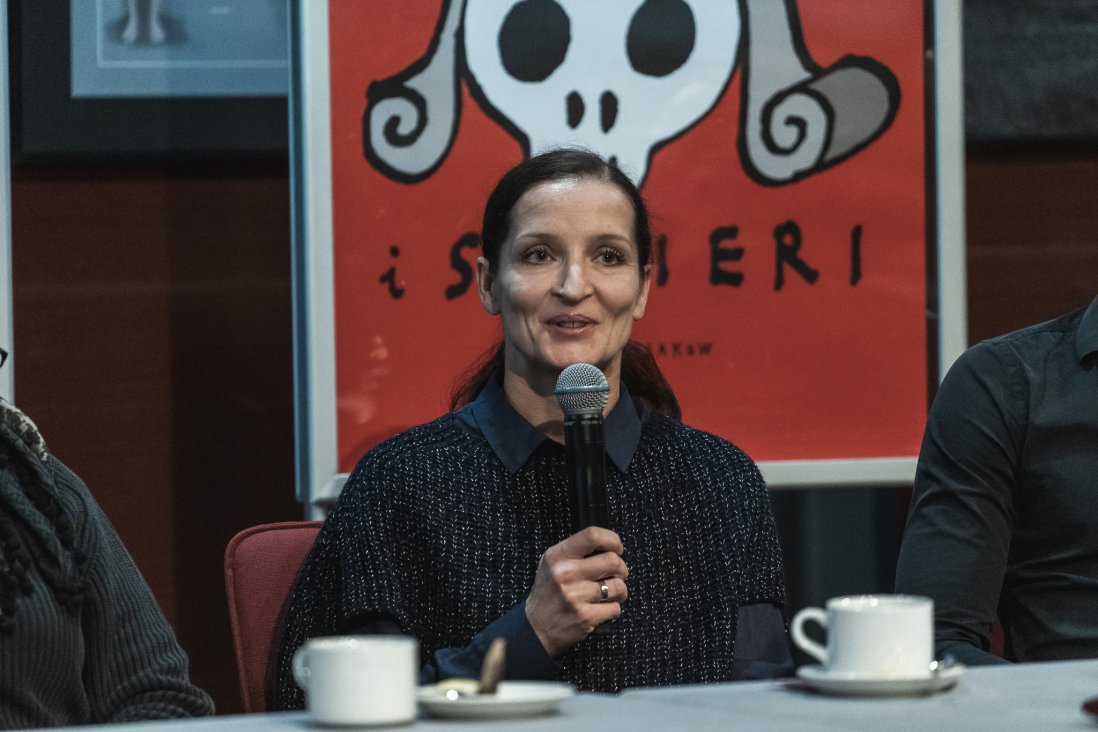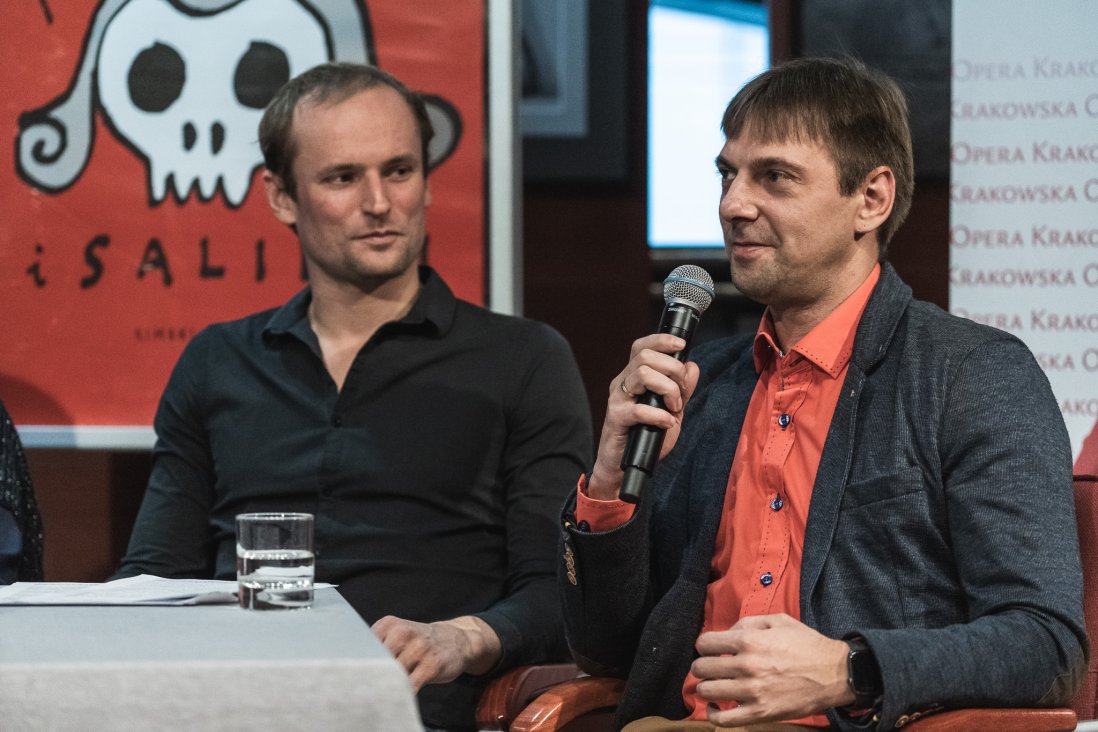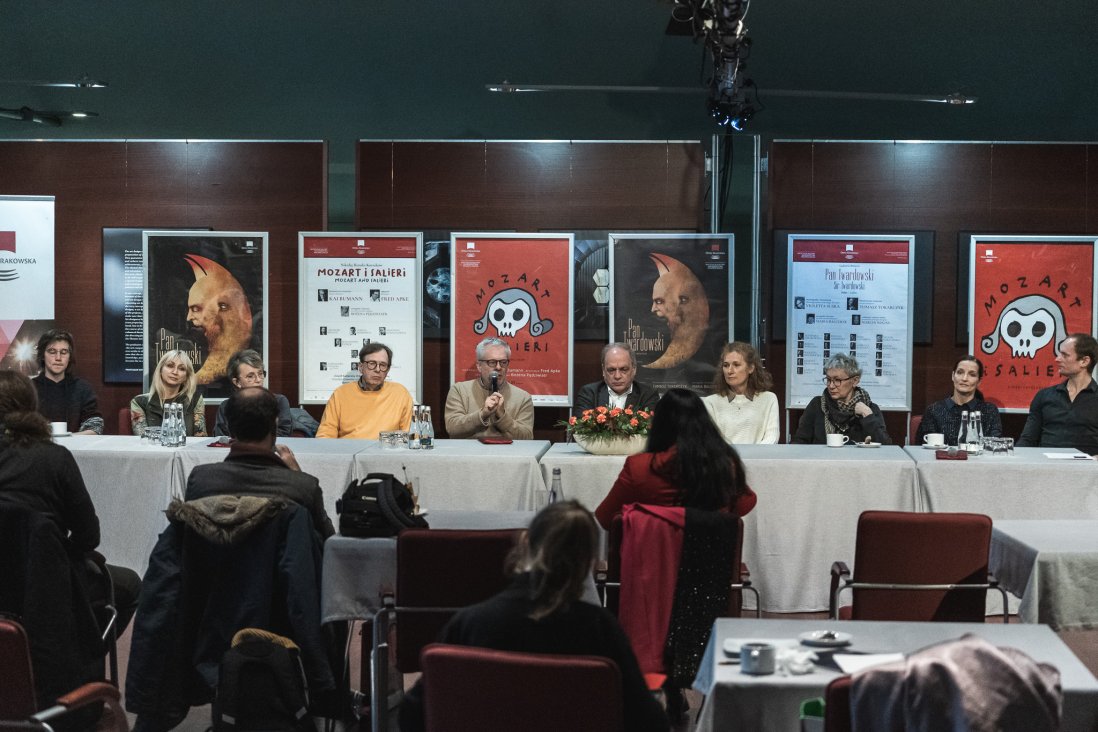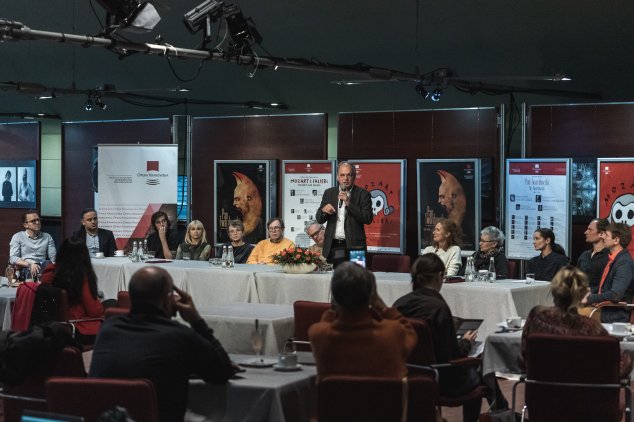
Press Conference Before the Opening Nights: “Mozart and Salieri” and “Sir Twardowski”
Press Conference Before the Opening Nights: “Mozart and Salieri” and “Sir Twardowski”
On Thursday 18 November, a press conference with the representatives of the mass media was held at the Mezzanine in the Kraków Opera. The subject matter of the conference were the upcoming premières in the Opera: “Mozart and Salieri” by Nikolai Rimsky-Korsakov and Ludomir Różycki’s ballet, “Sir Twardowski.”
The details of preparation for the “Mozart and Salieri” opera were disclosed by Fred Apke (director), Kai Bumann (music director), Marta Klubowicz (stage direction cooperation, Figure in Black), Bożena Pędziwiatr (author of set design and costumes), Jarosław Bielecki (Soloist – Mozart), Sebastian Marszałowicz (Soloist – Salieri) and Aleksander Gałązka (Actor – Poet).
The content of “Mozart and Salieri” resembles of the plot of film titled “Amadeus.” As we know, this story has nothing to do with the reality. “Mozart was not poisoned and he and Salieri were good friends; (...) the events presented in Pushkin’s drama, Rimsky-Korsakov's opera and Forman’s film did not happen - they are a romanticised picture of the actual events,” clarifies the music director of the performance, Kai Bumann. “However, we are focusing on another problem addressed in the work - the meeting of a genius and a skilful craftsman, who realises that he lacks talent. I became greatly interested in it and this has also affected my work - both with the singers and the orchestra. It may be said that we have spoiled Rimsky-Korsakov's work - in a sense that the we have stopped the flow of it and have interspersed it with Pushkin’s most beautiful poems to highlight the sense of the performance even better. To this aim, we have introduced the additional character of the Poet, who represents Pushkin himself. So this is an extended version of the opera - I am hoping that Rimsky-Korsakov will forgive us.
This is a rare phenomenon that such a great and impressive poet as Pushkin creates a drama that later becomes an opera libretto. Before reading the libretto for “Mozart and Salieri”, I first read Pushkin’s play and I must admit that for the first time I really delved into his life and works. I noticed immediately that both character reflect Pushkin himself and this theatre play was created at a very important, decisive moment of his life,” says the director, Fred Apke. “In the character of Salieri, he found tradition resistant to changes and ossification and criticised them. A true poet always finds himself in his characters; Pushkin was also struggling with himself, his literary skills and craft and this is his Salieri-like side. Yet he also had solemn moments of literary inspiration that were present throughout his creative life - and this is the Mozart part in him.”
On the other hand, “Sir Twardowski” was discussed by Violetta Suska (author of choreography and staging), Maria Balcerek (author of set design and costumes), Gabriela Kubacka (Soloist – Passion, Mother), Dzmitry Prokharau (Soloist – Devil) and Yauheni Yatskevich (Soloist – Twardowski).
This year marks the 100th anniversary of the world première of “Sir Twardowski.” “When Bogusław Nowak, the Opera’s General Manager, suggested this title to me, I asked about the convention for staging it,” recollects Violetta Suska, author of choreography and staging. ”I wanted to know whether we would follow the tradition or whether we could allow ourselves a bit of craziness. The director said: “You are free to decide.” I am not sure if he will be happy with the end result, but I willingly accepted this offer. Thus, we are presenting you with a performance that is far from the original.” (...) Every one of us has a good and bad part inside, there is no soul that would be completely good or completely evil. This performance is also about dualism: the struggle between the good and evil inside every one of us and that every one of us is a bit like Twardowski, the “Polish Faustus.” Will good or evil be victorious? You will find out watching the performance.
The author of costumes and set design, Maria Balcerek, adds: “Designing for ballet is always a huge challenge, because what is attractive as a drawing but is static has to take a form that must be convenient for the dancers. Obviously, it must be verified carefully along the way; in the end, our aim is that the designed costumes and set design imbue the characters with life and instil the space with dynamics.”
The meeting was moderated by the General Manager of the Opera, Bogusław Nowak.
The content of “Mozart and Salieri” resembles of the plot of film titled “Amadeus.” As we know, this story has nothing to do with the reality. “Mozart was not poisoned and he and Salieri were good friends; (...) the events presented in Pushkin’s drama, Rimsky-Korsakov's opera and Forman’s film did not happen - they are a romanticised picture of the actual events,” clarifies the music director of the performance, Kai Bumann. “However, we are focusing on another problem addressed in the work - the meeting of a genius and a skilful craftsman, who realises that he lacks talent. I became greatly interested in it and this has also affected my work - both with the singers and the orchestra. It may be said that we have spoiled Rimsky-Korsakov's work - in a sense that the we have stopped the flow of it and have interspersed it with Pushkin’s most beautiful poems to highlight the sense of the performance even better. To this aim, we have introduced the additional character of the Poet, who represents Pushkin himself. So this is an extended version of the opera - I am hoping that Rimsky-Korsakov will forgive us.
This is a rare phenomenon that such a great and impressive poet as Pushkin creates a drama that later becomes an opera libretto. Before reading the libretto for “Mozart and Salieri”, I first read Pushkin’s play and I must admit that for the first time I really delved into his life and works. I noticed immediately that both character reflect Pushkin himself and this theatre play was created at a very important, decisive moment of his life,” says the director, Fred Apke. “In the character of Salieri, he found tradition resistant to changes and ossification and criticised them. A true poet always finds himself in his characters; Pushkin was also struggling with himself, his literary skills and craft and this is his Salieri-like side. Yet he also had solemn moments of literary inspiration that were present throughout his creative life - and this is the Mozart part in him.”
On the other hand, “Sir Twardowski” was discussed by Violetta Suska (author of choreography and staging), Maria Balcerek (author of set design and costumes), Gabriela Kubacka (Soloist – Passion, Mother), Dzmitry Prokharau (Soloist – Devil) and Yauheni Yatskevich (Soloist – Twardowski).
This year marks the 100th anniversary of the world première of “Sir Twardowski.” “When Bogusław Nowak, the Opera’s General Manager, suggested this title to me, I asked about the convention for staging it,” recollects Violetta Suska, author of choreography and staging. ”I wanted to know whether we would follow the tradition or whether we could allow ourselves a bit of craziness. The director said: “You are free to decide.” I am not sure if he will be happy with the end result, but I willingly accepted this offer. Thus, we are presenting you with a performance that is far from the original.” (...) Every one of us has a good and bad part inside, there is no soul that would be completely good or completely evil. This performance is also about dualism: the struggle between the good and evil inside every one of us and that every one of us is a bit like Twardowski, the “Polish Faustus.” Will good or evil be victorious? You will find out watching the performance.
The author of costumes and set design, Maria Balcerek, adds: “Designing for ballet is always a huge challenge, because what is attractive as a drawing but is static has to take a form that must be convenient for the dancers. Obviously, it must be verified carefully along the way; in the end, our aim is that the designed costumes and set design imbue the characters with life and instil the space with dynamics.”
The meeting was moderated by the General Manager of the Opera, Bogusław Nowak.

